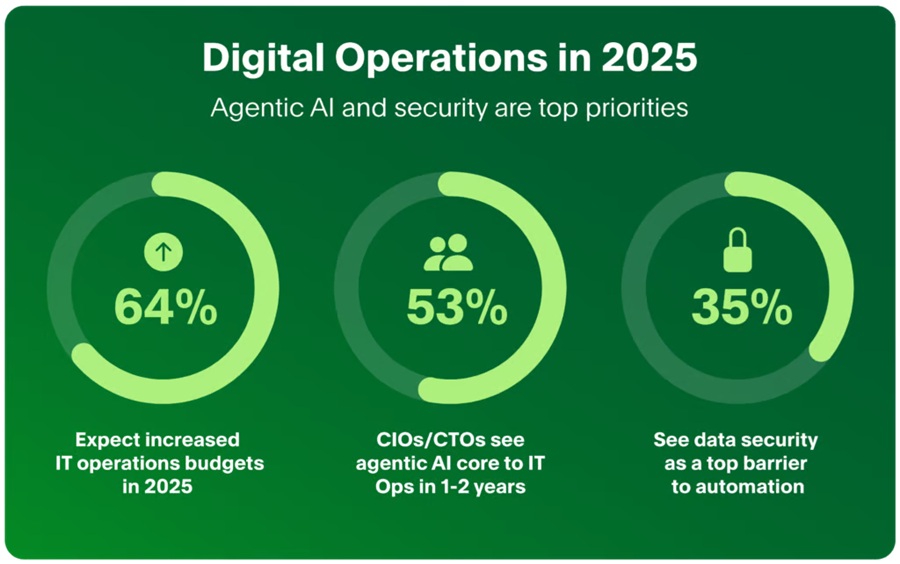Significant improvements in operational resilience, more effective use of automation and faster time to market are driving optimism about IT spending in 2025, with a majority of leaders expecting their budgets to increase year-over-year, according to the 2025 State of Digital Operations Report from PagerDuty.

Source: PagerDuty
Survey results include:
- 64% of respondents expect IT operations budgets to increase in 2025 to support continued investments in operational efficiency, resilience and excellence.
- Enthusiasm for agentic AI is highest among CIOs and CTOs, with a majority (53%) viewing it as core to future IT operations.
- Although automation has become more sophisticated and pervasive across all industries and regions, leaders cite two challenges as the top barriers to broader adoption: mitigating security risks and navigating a talent gap to ensure teams have the right skills and capabilities to drive and support automation across the organization.
In 2024, AI has evolved from a novelty technology to the cornerstone of modern IT operations. Survey respondents reported that they were experiencing the benefits of GenAI across many key performance indicators including:
- Operational efficiency gains (37%)
- Improved customer experiences (36%)
- Better insights from data (38%)
Agentic AI is particularly poised to play a critical role within the next one to two years, with 88% of respondents viewing agentic AI to be either core or peripheral to future IT operations.
Looking ahead, cybersecurity is additionally expected to be a high priority in 2025. 71% of respondents expect an expansion of security and operations budgets in the next year, compared to only 14% who expect to see a consolidation. Security concerns are especially notable in industries that handle valuable intellectual property and emerging technologies. Media (95%) and tech (94%) companies report the highest priority for security.
Methodology: The report is based on survey responses from more than 1,100 operations leaders across the North American, European, Middle Eastern, and African (EMEA) and Asia-Pacific and Japan (APJ) regions.
